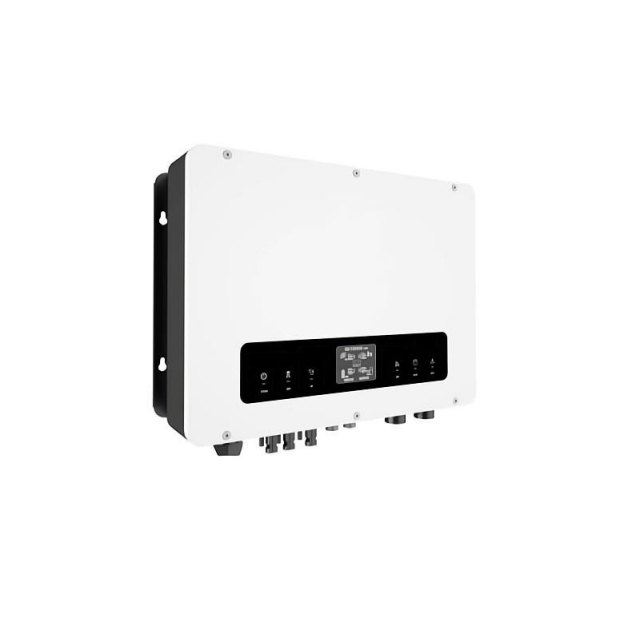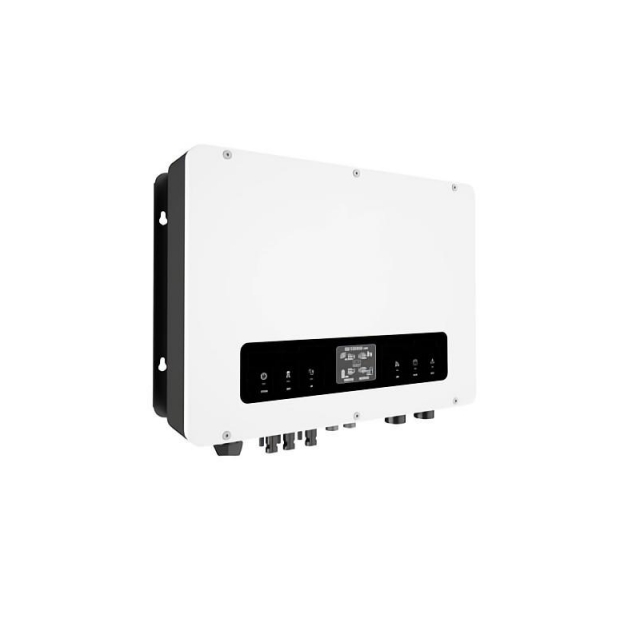![]() Price:
Negotiable
Price:
Negotiable
![]() Model: 98.2%
Model: 98.2%
![]() Power: 8KW
Power: 8KW
![]() Display:
Display:
![]() Certification: CE,
ISO
Certification: CE,
ISO
![]() Protection Class:
IP65
Protection Class:
IP65
![]() Cooling:
Cooling:
![]() Operating Temperature:
-25 ~ +60 °C
Operating Temperature:
-25 ~ +60 °C
![]() Conversion Efficiency:
98.2%
Conversion Efficiency:
98.2%
![]() Dimensions: 548*444*184 mm
Dimensions: 548*444*184 mm
![]() Weight: 27kg
Weight: 27kg
![]() Minimum Order Quantity:
1 SET
Minimum Order Quantity:
1 SET
![]() Delivery Time: 90
Days
Delivery Time: 90
Days
![]() Place of Origin:
CHINA.
Place of Origin:
CHINA.
![]() Trading Method:
FOB/CIF/EXW Xiamen Port
Trading Method:
FOB/CIF/EXW Xiamen Port
A three-phase hybrid inverter with an 8KW capacity is a versatile and efficient device used for power conversion and management in various applications.
Technical Data :
|
AC power rating |
8KW |
|
European efficiency |
98.2% |
|
Number of feed-in phases |
1 |
|
Number of MPP trackers |
1 |
|
Dimensions |
548*444*184mm |
|
Protection Class |
IP65 |

Features:
Multiple Input Sources: The hybrid inverter is designed to work with multiple energy sources simultaneously, such as solar panels, batteries, and the grid. It intelligently manages and optimizes the power flow from these sources to ensure a stable power supply.
Battery Charging: The inverter has built-in charging capabilities for batteries. It efficiently charges the batteries using excess solar or grid power, maximizing the utilization of renewable energy and providing backup power during grid outages.
Grid Interaction: The hybrid inverter allows bidirectional power flow between the renewable energy system and the grid. It can inject excess power generated by renewable sources into the grid, earning credits or selling it back to the utility company. It also allows power to be drawn from the grid when the renewable sources are not generating enough power.
Three Phase Hybrid Inverter Product Applications:
Industrial and Agricultural Applications: Three-phase hybrid inverters are also suitable for industrial and agricultural applications. They can be used to power machinery, pumps, and other equipment, utilizing renewable energy sources and reducing dependency on the grid. The battery charging function offers backup power during power outages, minimizing production downtime.
Off-Grid Solutions: In remote areas without access to the grid, a three-phase hybrid inverter with battery storage can provide reliable and sustainable power. It can be combined with renewable energy sources like solar panels and wind turbines to create an off-grid power system, ensuring a stable power supply for residential, commercial, or industrial applications.
Microgrids: Three-phase hybrid inverters can be part of a larger microgrid system. Microgrids are localized power grids that can operate independently or in conjunction with the main power grid. The inverter’s grid interaction capabilities allow for seamless integration and management of power from renewable sources and the main grid in a microgrid setup.
Three Phase Hybrid Inverter Key Functions:
Residential Installations: A three-phase hybrid inverter is suitable for residential installations with medium to high energy demands. It enables homeowners to utilize renewable energy sources like solar panels, reduce their electricity bills, and gain energy independence. The battery charging function provides backup power during grid outages, ensuring uninterrupted power supply to essential loads.
Commercial Installations: Commercial buildings, such as offices, schools, and shopping centers, can benefit from a three-phase hybrid inverter. It enables businesses to reduce their electricity costs, lower their carbon footprint, and showcase their commitment to sustainability. The inverter’s energy management capabilities help optimize energy consumption and ensure a stable power supply.

A three-phase hybrid inverter with a power rating of 12KW is a versatile and efficient device used for power conversion and management in various applications. Features: Power...

The BLD High Voltage Three Phase EPH series is a hybrid inverter with both on-grid and off-grid mode. It supports quick and easy single person installation with international quality st...

A three-phase hybrid inverter with an 8KW capacity is a versatile and efficient device used for power conversion and management in various applications. Features : Power C...

